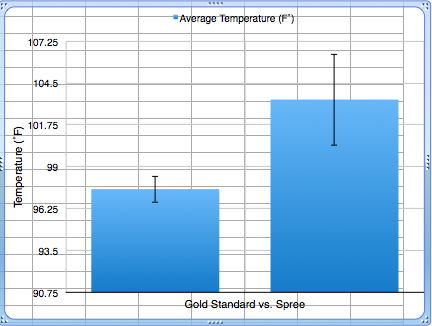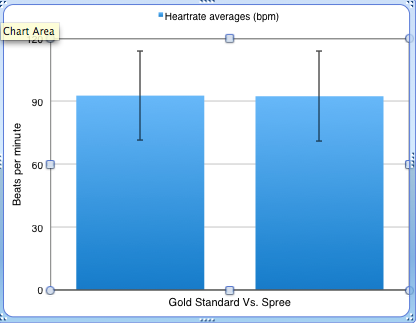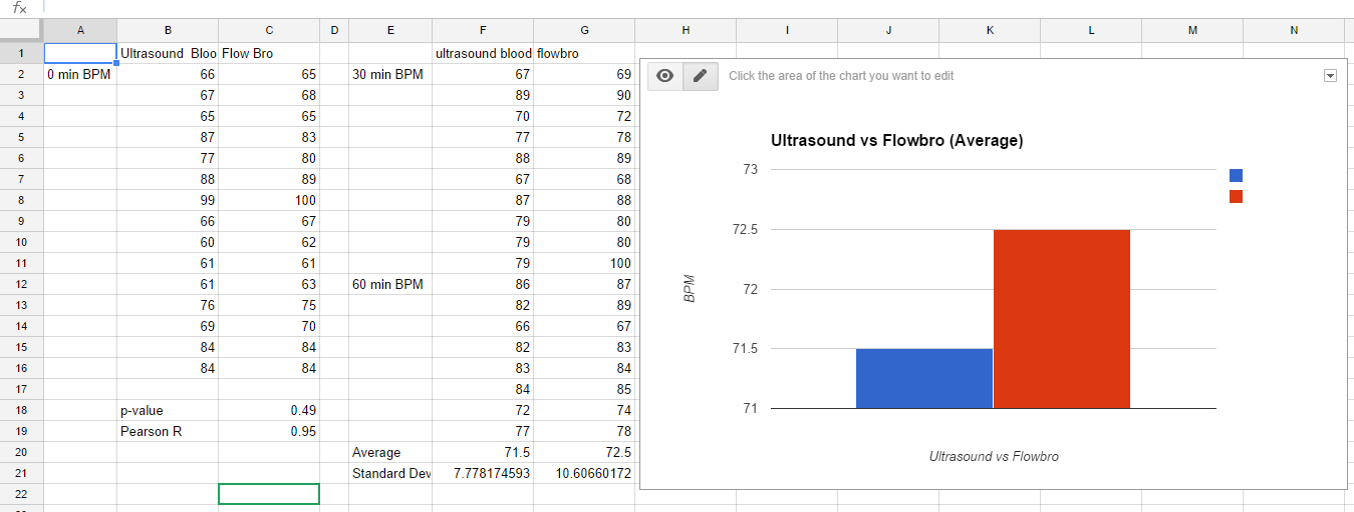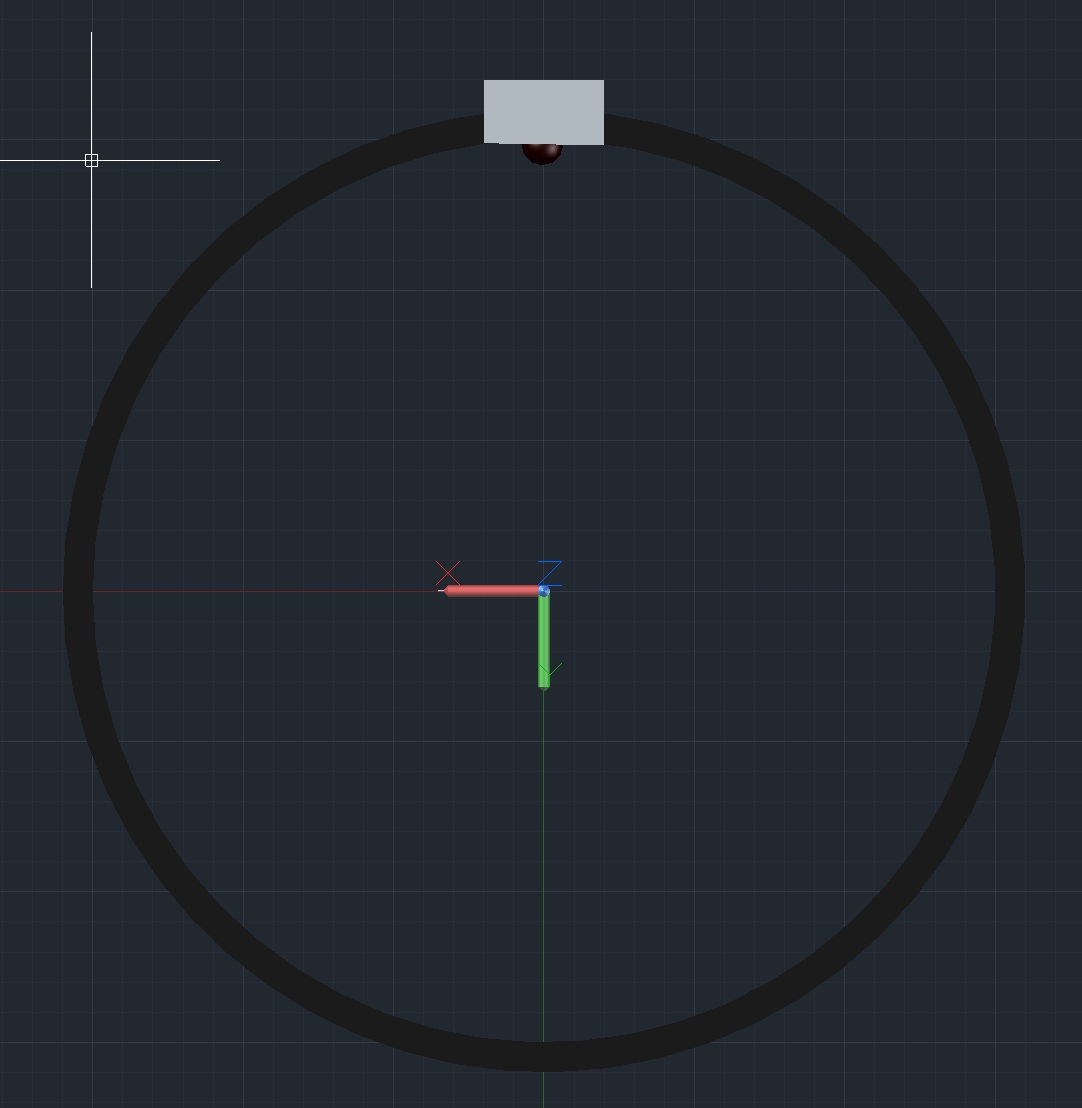BME100 f2014:Group24 L3
Inferential Statistics/Graphs:
- Heart Rate
**Gold standard:
- Mean: 92.51 bpm
- Standard Deviation: 21.29 bpm
- Standard Error: 82.75%
**Spree Headband
- Mean: 92.82 bpm
- Standard Deviation: 21.48 bpm
- Standard Error: 83.50%
***Statistical Totals:
- P-Value: 0.52379
- Pearson's R: 0.885218
- Temperature
**Gold standard:
- Mean: 97.53^#oC#
- Standard Deviation: .859
- Standard Error: 3.19%
**Spree Headband
- Mean: 103.4^#oC#
- Standard Deviation: 2.99
- Standard Error: 11.11%
***Statistical Totals:
- P-Value: 2.6382E^#-239#
- Pearson's R: -0.01738
*
*
Experimental Errors:Throughout the experiment there were some errors. One of the main errors was that the Spree band could have moved around while walking and this could have resulted in some inconsistencies. Another experimental error was time interval. Since all of the group members were keeping track of time, the results could have differed. One of the major errors was that because data was being put up by a colossal amount of groups, there were inconsistencies in the way people did the experiment, so some data had to be removed in order to have reliable results and analysis. We also experienced issues with calculating the Pearson's R value for temperature, yet we cannot find out why. May be due to the large sample size or miscalculations with the mean or standard deviation.
Conclusion: Our results indicate a p-value of 0.52 for the t-test involving the Spree and Gold Standard heart rate data. With a p-value significantly greater than 0.05, the data suggests that there is no relationship between the two methods. From this we can assume that the Spree headband does not provide accurate measurements in terms of heart rate. In our t-test involving temperature measurements in the Spree headband and the Gold Standard monitor, we received an extremely small p-value that was less than 0.05. With this p-value, the data does not suggest a significant difference between the two, suggesting, assuming that the Gold Standard temperature measurement is accurate, that the Spree headband records more accurate temperature measurements.
Based on the results, it is clear that the Spree fitness band has multiple design flaws. One of the major design flaws was the temperature measurements. Instead of taking an exact temperature, the Spree gave a level for a range of temperatures. In comparison to the gold standard, the temperature measurements were clearly skewed because the band was on the subjects forehead and that is the temperature it took; the thermometer that takes temperature from the mouth. For their next Spree band, the company should make a band which measures exact temperature and also a more reliable way of measuring the temperature of the body's core rather then just the forehead.The way they measure temperature is qualitative and for more accuracy it should be quantitative. The temperature measurements could be improved by having an additional piece that could be placed in the mouth during exercise, but this could prove to be a bit cumbersome. In addition to the flaws associated with the temperature measurements, the design of the band is flawed. The material does not absorb heat well and also leaves terrible tan lines. A solution to this problem could be finding a material that is heat absorbent. One of the more reliable, but still not as accurate as the gold standard, aspects of the Spree band was its measurements of heart rate. In conclusion, the Spree band is not as accurate as the gold standard but it is sufficient.
Lab 3B:
Target Population and Need: A lot of jobs today require long hours of sitting. From office workers to businessmen who spend hours on airplane flights, sitting for extended periods can lead to a lot of health problems. One of these problems is deep vein thrombosis. Our body monitoring device, the flow bro monitors blood flow in the leg and alerts the person when they have been sitting for too long to stand up and start moving to avoid any severe leg pain. The target populations of the product are office workers, people who frequent planes, and even race car drivers. There is a clear need for the product because occupations in which sitting is prominent have become commonplace.
 Design
Design
